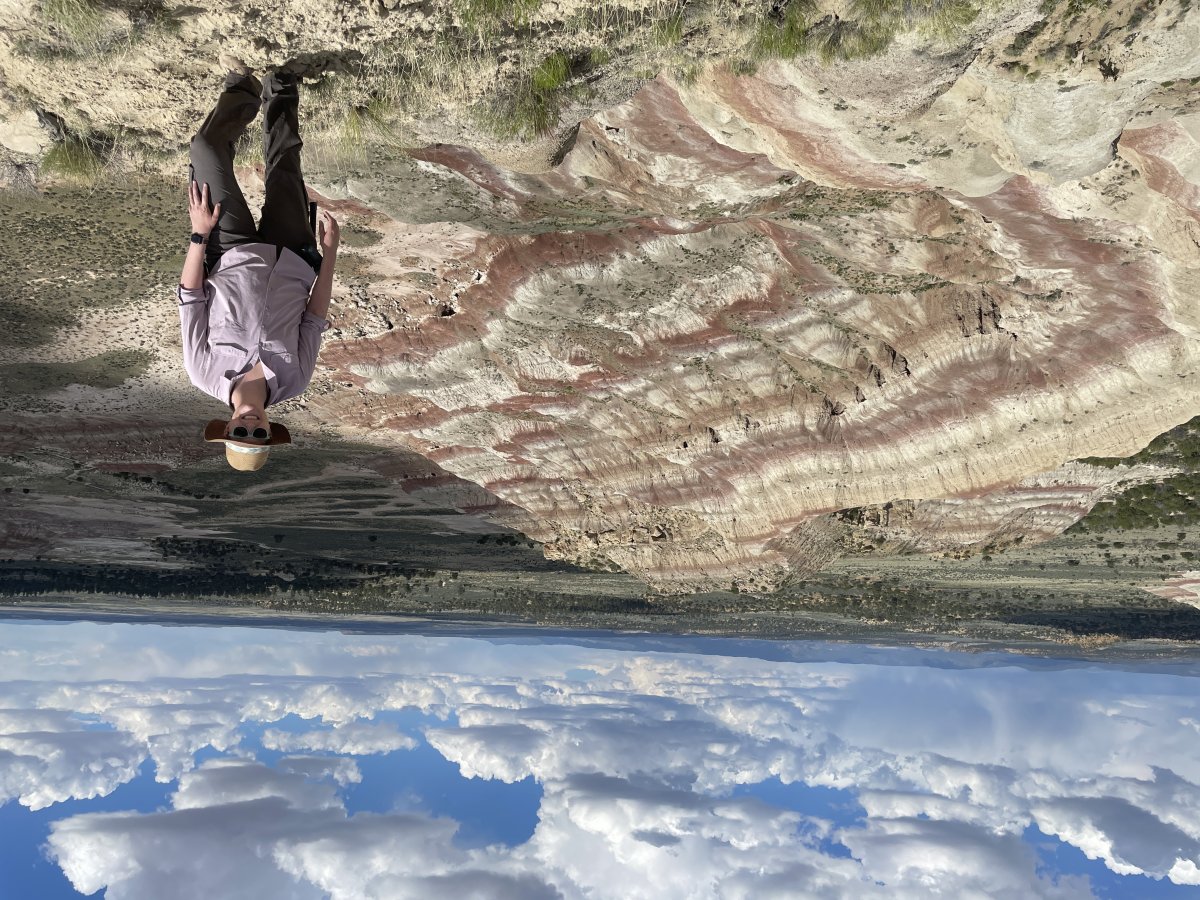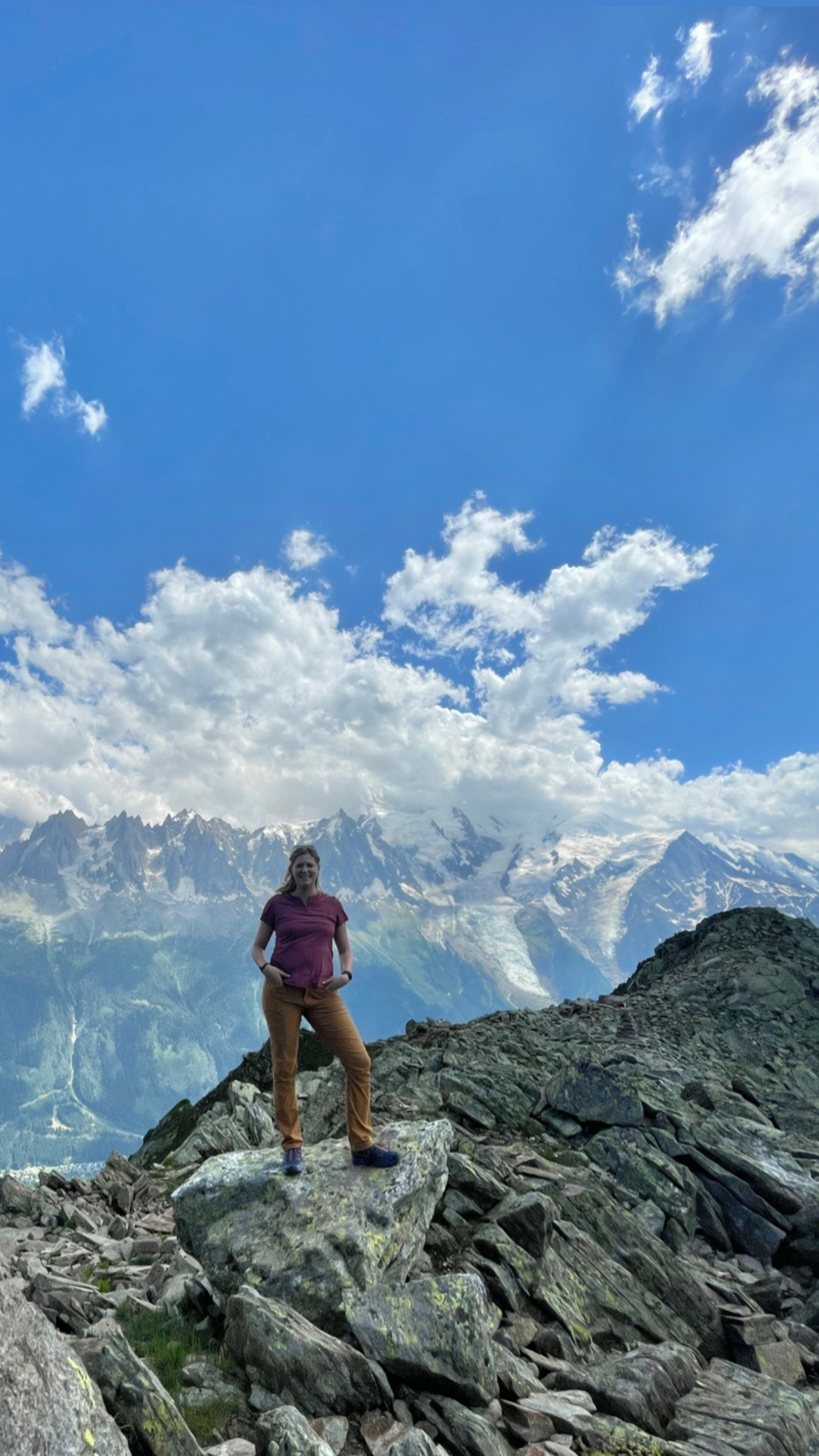Welcome New Faculty Member: Emily Beverly


We are excited to announce the arrival of Emily Beverly, our newest Sedimentology and Stratigraphy faculty member starting in January of 2024. Emily is the first of three hires from our successful spring Sed/Strat search to start. Nick Swanson-Hysell will join us in Fall of ‘24 and Julia Wilcots will be the last to join in Fall ‘25.
“I should have known when I went to college that geology was for me, but it took a while for me to find it."
Emily grew up in a small town in Texas. She spent her entire life there until going off to college. She was a huge rock kid (like many in the department were)--she still owns, uses, and cherishes the rock hammer she was gifted at age 10 by her mother. Because her high school didn’t have a geology or earth science curriculum, she didn’t realize that working with rocks could be a job. After heading off to Trinity University, a small liberal arts school in San Antonio, she was finally able to take geology courses. It wasn’t until she took the second course that she realized “oh! I could do this as a job!” She switched her major from anthropology to geology. “I should have known when I went to college that geology was for me, but it took a while for me to find it,” she explains. Though she left anthropology, she did take with her an interest in archeological side of things. She carried that interest throughout her career, as she now studies geology associated with archeological sites.
After receiving her Bachelor of Arts, Emily took a year off to decide what she wanted to do in grad school. She got a job at Southwest Research Institute, an institution that functions similarly to a research university, but without classes. There she was able to explore a variety of different projects and interests working with both the Earth & Planetary Science Group, and the Geology group. The type of work she was able to try out included hydrology of wells in Texas, map making, concrete experimentation for nuclear waste management. “I never knew what I was going to be doing the next day,” she explains, but she also felt this was an ideal opportunity to get a better understanding of what types of work and research interested her.
She finally decided that she wanted to pursue an academic career in the geosciences, but wanted to incorporate her archeology interests into her research. She applied at a number of schools where folks were doing archaeology related projects. She ended decided to attend Rutgers for a Master’s program under Gail Ashley, who’s work focused on Olduvai Gorge in Tanzania, a famous archaeological site.
After finishing her M.S. Emily went straight to Baylor where she entered into a Ph.D. program where her focus changed slightly. She was still researching human evolution but instead of studying early hominins–the predecessors of humans–she was looking at homo sapiens evolution over the last 100,000 years. Her research now focused on an area in western Kenya close to Lake Victoria. There were a series of sediments that were not particularly well studied, or understood along the lake and on islands in the lake. She was trying to get a better understanding of why humans were there, and what the environment surrounding the lake was over the course of human presence there.
They were also interested in reconstructing the history of the lake. It had a period where it dried up around 15,000 years ago. Modeling precipitation patterns and potential evaporation of the past has implications for both ancient and modern humans who depend on the lake for survival.

After finishing her Ph.D. she did two separate postdoctoral appointments. One at Georgia state where she first started working on coring projects, bringing her into contact with the CSD Facility. The cores were drilled in 2011-13 near famous archeological sites, keeping the thread of human evolution present in her research. Some of these cores were then stored by CSD. She still has students who are working on cores that were part of that larger project. Emily hopes to one day get cores drilled from Lake Victoria in collaboration with a group of folks she currently works with.
Emily’s second postdoc was at the University of Michigan where she was working with Naomi Levin, who was doing work with clumped isotopes and triple oxygen isotopes–newer analytical methods that Emily wished to learn how to do, in order to apply them to her own work. Clumped isotope analysis gives you information on environmental temperatures (in either soil or water). Oxygen isotopes provide some idea of the amount of evaporation that has happened in the soil or in the lake. These two techniques allow researchers to narrow down whether or not changes in the environment are being driven by big picture climate dynamics.
After receiving an NSF postdoc, Emily went through a number of interviews at different places for faculty positions, and decided on joining the faculty at the University of Houston, which also put her close to family. It was a great fit at the time and she was able to continue her research, but was interested in making a change. In particular, she really enjoys being outdoors and with the heat waves in Texas, the number of days where people can’t leave the house safely have gone up. She would rather be outside in the cold of Minnesota than in the heat of Texas.
“I’m interested in these time periods in earth’s past that may be an analog for modern climate change”.

Besides the weather, Emily is really looking forward to being able to collaborate more with the CSD, working on existing cores and potential future projects that are already being talked about. She is also looking forward to continuing her work looking at the relationships between human evolution and the climates they existed in. Emily has also started a new project working in New Mexico, Wyoming, and North Dakota, looking at the Eocene. “I’m interested in these time periods in earth’s past that may be an analog for modern climate change.” During these hyperthermal events, temperature increased very rapidly at magnitudes similar to or even greater than today (though often on a timescale of 20,000 years vs 200). What happened in marine environments has been pretty well studied using marine cores and marine organisms, to hypothesize what may have happened on the land. However, Emily believes that more answers can be found about what happened on land through looking at the land itself. She’s using Sed/Strat, clumped isotope analysis, and paleomagnetism techniques to look closely at the land during these interesting periods in earth’s history.
